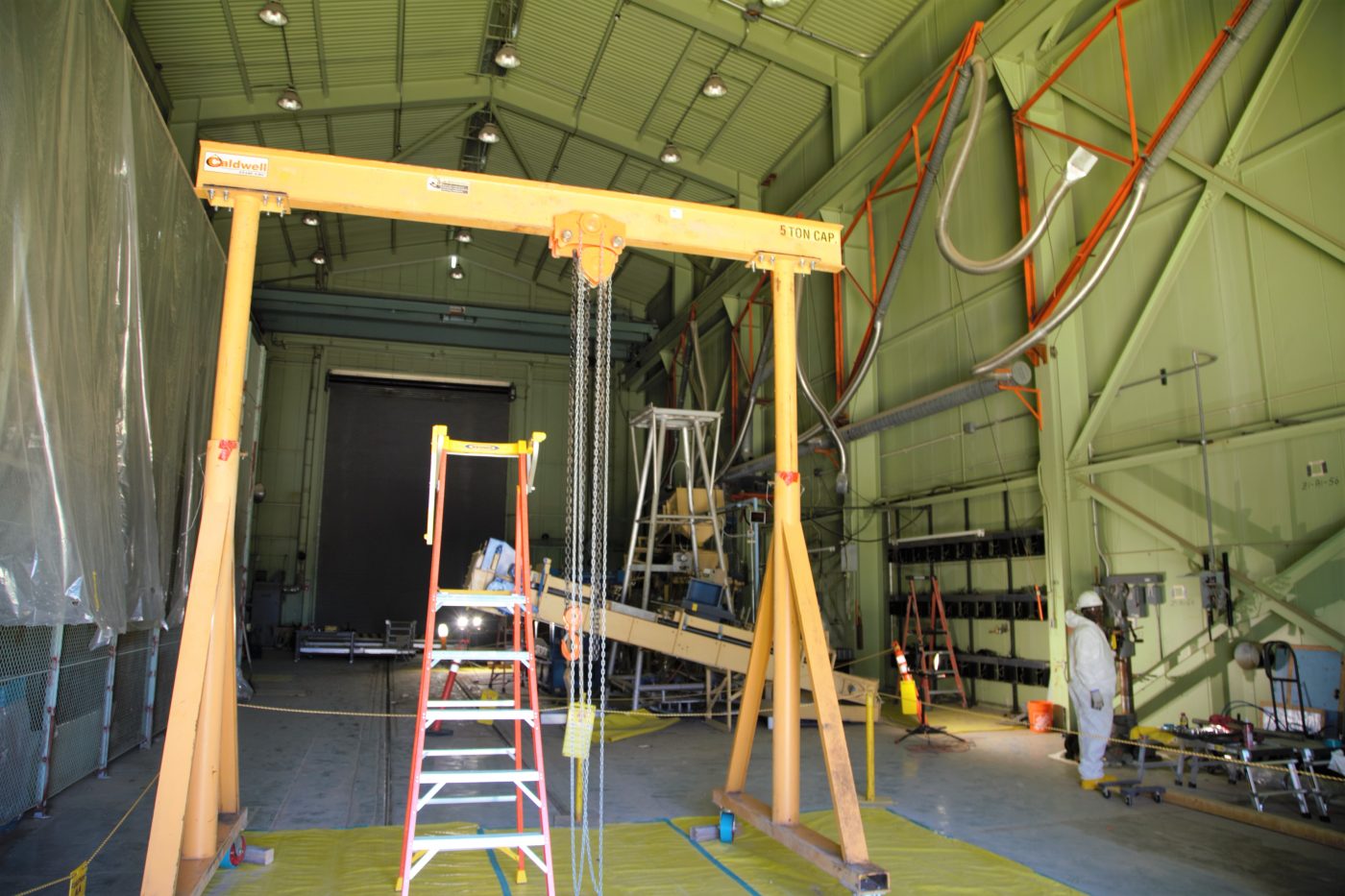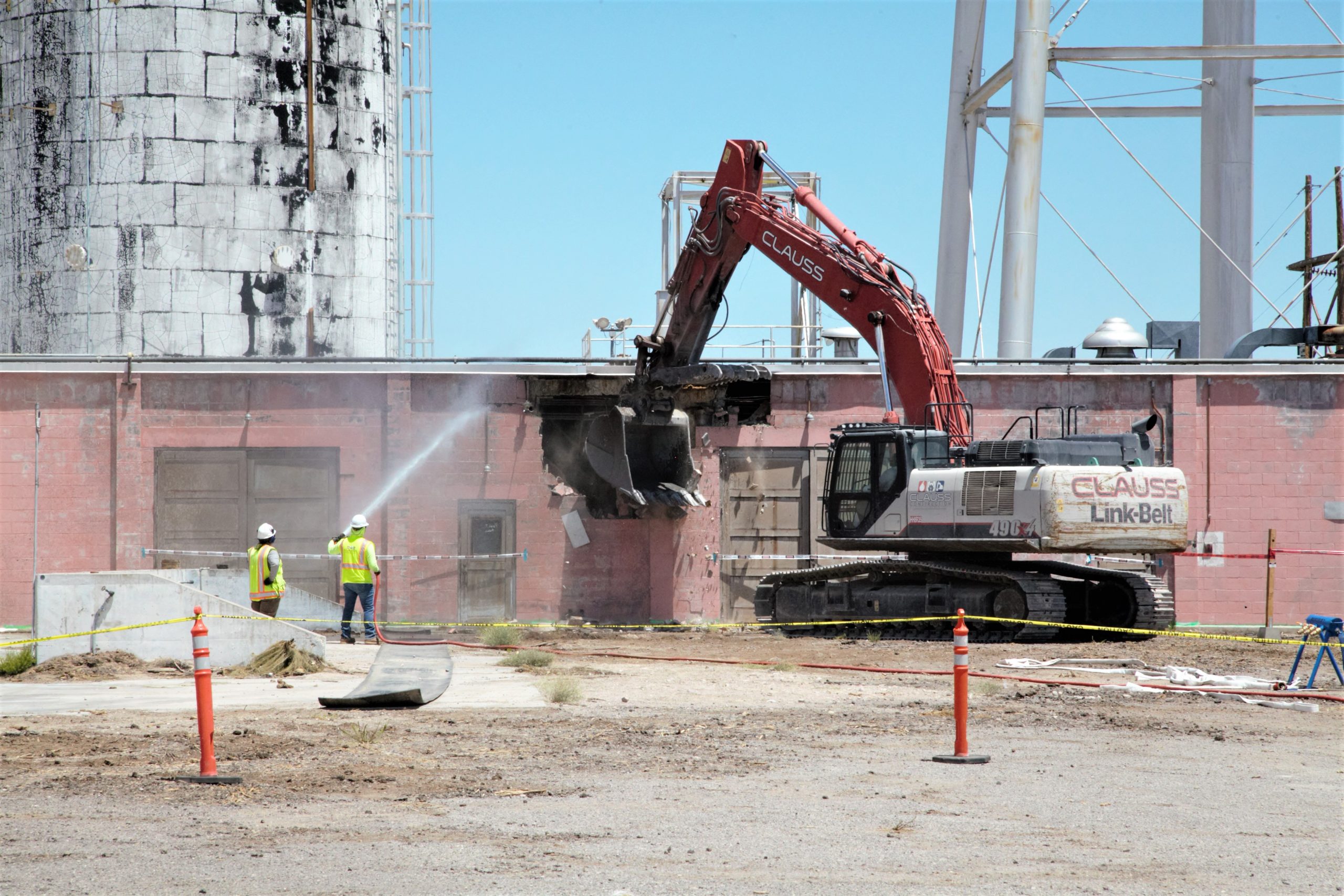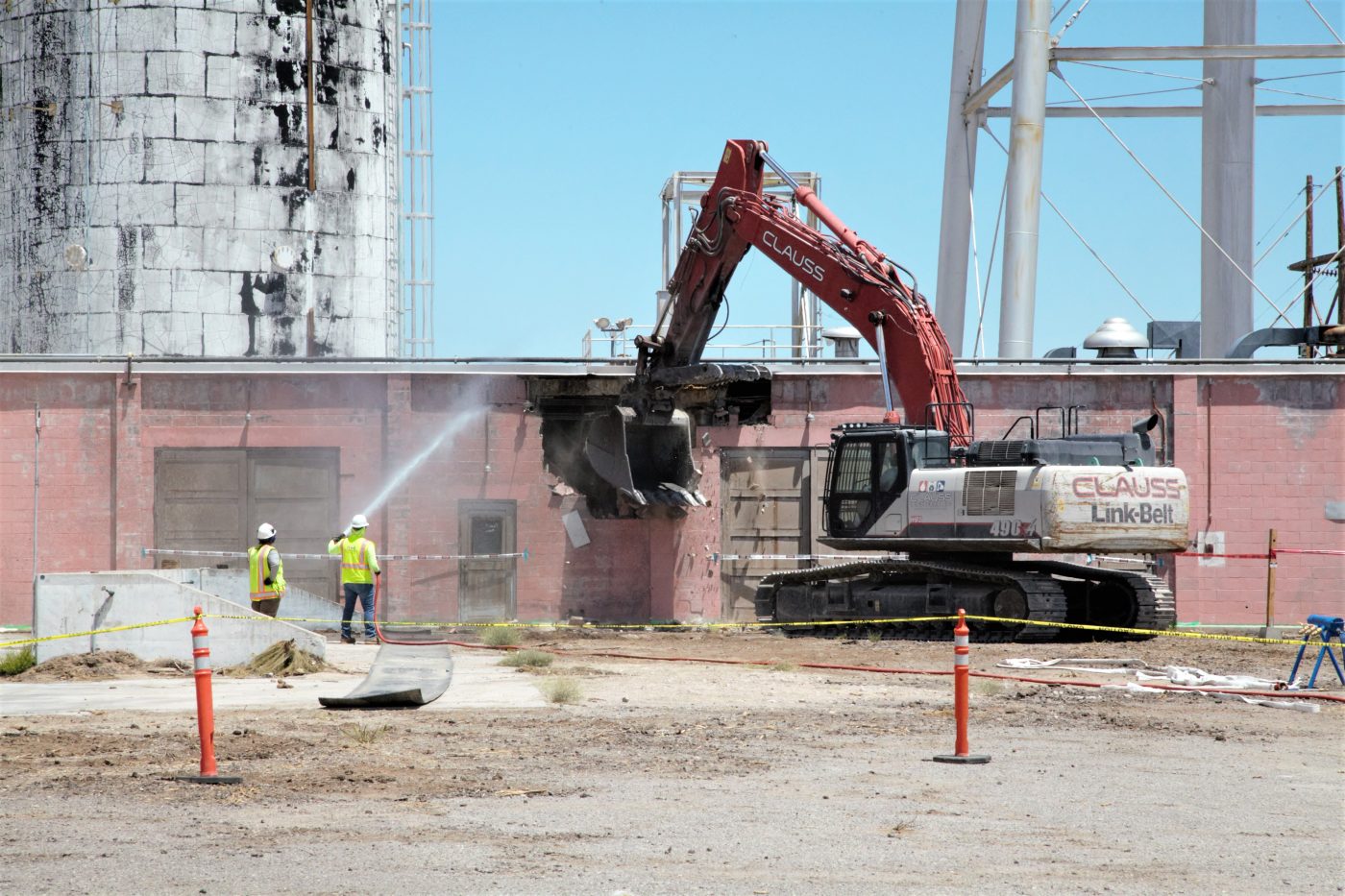Completes demolition of four buildings at Test Cell C
Months of planning came to fruition as crews from the EM Nevada Program safely completed demolition of four buildings at the Test Cell C (TCC) Facility at Area 25 of the Nevada National Security Sites (NNSS), meeting an EM 2023 priority ahead of schedule.
“This is an important accomplishment for our Industrial Sites team,” said John Wrapp, program manager for Navarro Research and Engineering, the EM Nevada Environmental Program Services contractor. “The completion of our 2023 mission and priorities goals at TCC is the result of significant preparatory work, careful collaboration between management and staff and the hard work of EM Nevada crew members.”
Both TCC and the Engine Maintenance, Assembly, and Disassembly (EMAD) Facility were part of the now-inactive Nuclear Rocket Development Station, which supported development and testing of nuclear rocket engines from 1957 until 1973.
“In total, 1,975 Industrial Sites were identified in the Federal Facility Agreement and Consent Order, have been inventoried, and corrective actions planned or completed. Regulatory closure has been achieved at 99% of them,” said Industrial Sites Manager Jason Sofie. “Demolition activities over recent weeks were primarily focused on open-air demolition of four main buildings at Test Cell C.”
Demolition at TCC began with Building 3220, which once housed a series of water pumps and an operations control center. Crew members used excavators with hydraulic shears and hammers to bring down the buildings. Water from hoses was used for dust suppression.

Crew members used excavators to load debris into dump trucks, and radiological control technicians (RCTs) scanned the buckets of each excavator to ensure debris destined for industrial disposal did not contain radionuclides. Waste was transported and disposed of at the NNSS Area 9 U-10c landfill. Prior to transportation, RCTs scanned the truck tires to make sure they did not track radionuclides when they departed TCC.
The other three buildings demolished during the current window of work at TCC each served different roles. One was a generator building that produced electricity, another was a pump room that processed water, and the third was a cryogenics building that supported the liquid hydrogen process as rocket engines were tested.

One of the hurdles at TCC is simply its age.
“The unique challenge is that it’s a legacy site,” Sofie said. “It was operated decades ago in the ‘60s and ‘70s so information is sparse and not completely clear when it comes to drawings and as-left conditions. Systems, structures and components have been there for a long time and have partially degraded, causing potentially unstable conditions, and wildlife occupied the structures we had to address.”
Crews spent months on characterization and hazard-reduction activities at TCC. The abatement work included the removal of hazardous waste and asbestos and allowed crew members to perform “open-air” demolition. The debris transported to the U-10c landfill was industrial waste, meaning it was determined to not contain hazardous chemicals or radiological contamination above the industrial landfill’s waste acceptance criteria.
“We started with open-air demolition preparations,” Sofie said. “These preparations included removal of hazardous waste and prohibited items such as lead, asbestos, Freon, oils, greases and lighting ballasts. So, once we got to the point waste operations was satisfied prohibited items were removed, they gave us documented concurrence the buildings were ready for open-air demo.”
Crew members performed radiological surveys and underground mapping at both TCC and EMAD prior to initiating demolition work. Learn more about the preparatory work at https://www.energy.gov/em/articles/duo-returns-24-years-later-conduct-mapping-em-nevada-cleanup.
Work now shifts back to the EMAD Facility to begin the demolition of Building 3901, also known as the Train Shed. The end goal at EMAD and TCC is to demolish both facilities down to the concrete slab. With the demolition of the four buildings at TCC recently finished, EM Nevada completed its EM mission and priorities goals for the 2023 calendar year.


